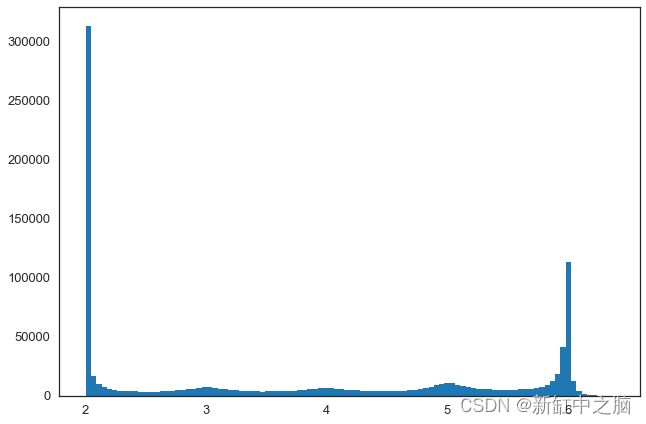Python三维地址建模教程【Gempy】
Gempy 是一个开源 Python 库,用于生成完整的 3D 结构地质模型。该库是从界面、断层和层方向创建地质模型的完整开发,它还关联地质层序列以表示岩石侵入和断层顺序。

地质建模算法基于通用协同克里金插值法,并支持 Numpy、PyMC3 和 Theano 等高端 Python 数学库。
Gempy 创建了一个网格模型,可以使用 Matplotlib 将其可视化为 2D 截面,也可以将 3D 几何对象可视化为 VTK 对象,允许在 Paraview 上表示地质模型,以进行自定义切片、过滤、透明度和样式设置。
本教程是具有 5 层和一个断层的分层地质设置的基本示例。为了让大多数用户完全可以访问本教程,我们创建了一个关于如何在 Windows 上使用 Anaconda 存储库分发安装 Gempy 的补充教程。可以在这里查看教程视频。
1、设置 Python 环境
在这一部分中,我们导入教程所需的库。该脚本需要 Gempy 以及 Numpy 和 Matplotlib。我们在脚本单元(%matplotlib inline)之后为 Matplotlib 图形的交互式表示配置了一个 Jupyter 选项。
请注意,警告只是用户在运行脚本时必须记住的消息,它们并不意味着代码失败。由于本教程是在 Windows 上,一些补充库无法安装,但地质建模代码的整体性能是完整的。
# Embedding matplotlib figures in the notebooks
%matplotlib inline
# Importing GemPy
import gempy as gp
# Importing auxiliary libraries
import numpy as np
import matplotlib.pyplot as plt
2、创建地质模型对象和地理学定义
本教程在 2km x 2km x 2km 的扩展范围内创建一个 100 列 x 100 行 x 100 层的网格。更高的分辨率是可能的,但计算时间会更长。坐标系为局部坐标系,教程将使用 UTM 坐标评估 Gempy 的性能。
方向和地质接触从 CSV 文件导入并转换为 Pandas 数据框。然后定义地质系列(断层/地层)以及地质构造序列。
值得一提的是,必须独立插入故障,其中最近的排在第一个:
# Importing the data from CSV-files and setting extent and resolution
geo_data = gp.create_data([0,2000,0,2000,0,2000],[100,100,100],
path_o = "../Txt/simple_fault_model_orientations.csv", # importing orientation (foliation) data
path_i = "../Txt/simple_fault_model_points.csv") # importing point-positional interface data
gp.get_data(geo_data).loc[:,['X','Y','Z','formation']].head()
| X | 是 | Z | 形成 | ||
|---|---|---|---|---|---|
| 接口 | 52 | 700.0 | 1000.0 | 900.0 | Main_Fault |
| 53 | 600.0 | 1000.0 | 600.0 | Main_Fault | |
| 54 | 500.0 | 1000.0 | 300.0 | Main_Fault | |
| 55 | 800.0 | 1000.0 | 1200.0 | Main_Fault | |
| 56 | 900.0 | 1000.0 | 1500.0 | Main_Fault |
# Assigning series to formations as well as their order (timewise)
gp.set_series(geo_data, {"Fault_Series":'Main_Fault',
"Strat_Series": ('Sandstone_2','Siltstone', 'Shale', 'Sandstone_1')},
order_series = ["Fault_Series", 'Strat_Series'],
order_formations=['Main_Fault',
'Sandstone_2','Siltstone', 'Shale', 'Sandstone_1',
], verbose=0)
3、地质序列图
Gempy 有一些有用的特征来表示定义的地质序列和地层序列。
gp.get_sequential_pile(geo_data)
4、审查输入数据
可以通过 Gempy 的“.get_”函数访问用于构建地质模型的不同数据集。
# Review of the centroid coordinates from the model grid
gp.get_grid(geo_data).values
array([[ 10., 10., 10.],
[ 10., 10., 30.],
[ 10., 10., 50.],
...,
[ 1990., 1990., 1950.],
[ 1990., 1990., 1970.],
[ 1990., 1990., 1990.]], dtype=float32)
# Defined interfases from the input CSV data
gp.get_data(geo_data, 'interfaces').loc[:,['X','Y','Z','formation']].head()
| X | 是 | Z | 形成 | |
|---|---|---|---|---|
| 52 | 700.0 | 1000.0 | 900.0 | Main_Fault |
| 53 | 600.0 | 1000.0 | 600.0 | Main_Fault |
| 54 | 500.0 | 1000.0 | 300.0 | Main_Fault |
| 55 | 800.0 | 1000.0 | 1200.0 | Main_Fault |
| 56 | 900.0 | 1000.0 | 1500.0 | Main_Fault |
# Defined layer orientations from the input CSV data
gp.get_data(geo_data, 'orientations').loc[:,['X','Y','Z','formation','azimuth']]
| X | 是 | Z | 形成 | 方位角 | |
|---|---|---|---|---|---|
| 2 | 500 | 1000 | 864.602 | Main_Fault | 270 |
| 1 | 400 | 1000 | 1400.000 | 砂岩_2 | 90 |
| 0 | 1000 | 1000 | 950.000 | 页岩 | 90 |
5、输入数据的图形表示
在这一部分中,进行了 2D 和 3D 表示以呈现接口和方向。
gp.plot_data(geo_data, direction='y')
E:\Software\Anaconda3\lib\site-packages\gempy\gempy_front.py:927: FutureWarning: gempy plotting functionality will be moved in version 1.2, use gempy.plotting module instead
warnings.warn("gempy plotting functionality will be moved in version 1.2, use gempy.plotting module instead", FutureWarning)
gp.plotting.plot_data_3D(geo_data)
6、地质插值
输入数据准备好后,我们可以使用 Gempy 库中的 InterpolatonData 方法定义插值的数据和参数。
地质模型在“compute_model”方法下计算。模型过程的结果是与 geo_data 具有相同阵列维度的岩性和断层。
interp_data = gp.InterpolatorData(geo_data, u_grade=[1,1], output='geology', compile_theano=True, theano_optimizer='fast_compile')
Compiling theano function...
Compilation Done!
Level of Optimization: fast_compile
Device: cpu
Precision: float32
Number of faults: 1
interp_data.geo_data_res.formations.as_matrix
interp_data.geo_data_res.get_formations()
[Main_Fault, Sandstone_2, Siltstone, Shale, Sandstone_1]
Categories (5, object): [Main_Fault, Sandstone_2, Siltstone, Shale, Sandstone_1]
lith_block, fault_block = gp.compute_model(interp_data)
7、岩性模型探索
岩性区块有两部分,第一部分包含有关岩性地层的信息,第二部分表示方向。在这一部分中,岩性分布和断层分离信息用直方图表示。
lith_block[0]
array([ 6.3131361 , 6.24877167, 6.19397354, ..., 2.00398016,
2.00626612, 2.00983 ], dtype=float32)
plt.hist(lith_block[0],bins=100)
plt.show()
plt.hist(fault_block[0],bins=10)
plt.show()
8、地质模型表示
与任何其他 Numpy 数组一样,生成的岩性块可以在 Matplotlib 上表示。然而,Gempy 有特殊的横截面表示方法。通过使用 Jupyter 小部件,沿 Y 方向的地质横截面的交互式表示是使用把手沿行移动来执行的。
gp.plotting.plot_section(geo_data, lith_block[0], cell_number=50, direction='y', plot_data=False)
import ipywidgets as widgets
def plotCrossSection(cell):
gp.plotting.plot_section(geo_data, lith_block[0], cell_number=cell, direction='y', plot_data=False)
widgets.interact(plotCrossSection, cell=widgets.IntSlider(min=0,max=99,step=1,value=50) )
gp.plotting.plot_scalar_field(geo_data, lith_block[1], cell_number=50, N=6,
direction='y', plot_data=False)
plt.colorbar()
plt.show()
ver_s, sim_s = gp.get_surfaces(interp_data,lith_block[1],
fault_block[1],
original_scale=True)
gp.plotting.plot_surfaces_3D(geo_data, ver_s, sim_s)
9、输入文件
可以在此链接下载本教程的输入文件。
原文链接:Gempy三维地质建模 — BimAnt








